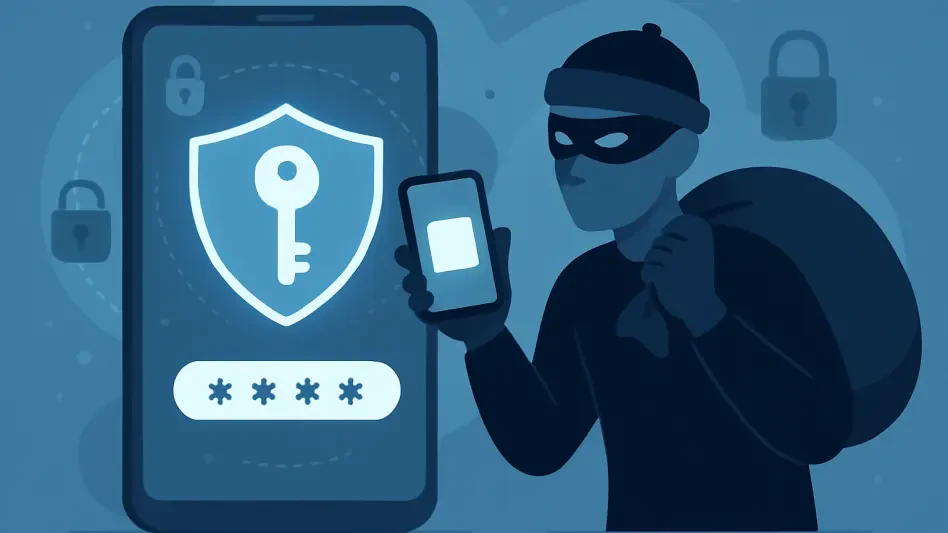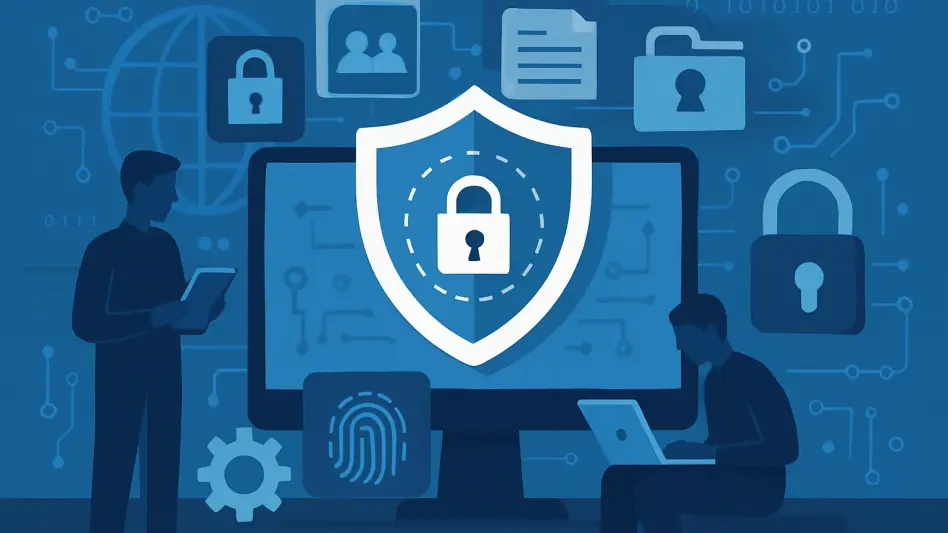In recent years, passkeys have emerged as an attractive alternative to traditional passwords, promising faster, more secure authentication. This technology represents a shift towards a passwordless future where digital interactions are simplified and security is heightened. However, the growing reliance on passkeys brings to light concerns about their viability, particularly in scenarios where a device gets stolen. Can a system relying on passkeys offer sufficient protection in such situations? To address this question, it’s essential to dissect the operational dynamics of passkeys, understand their limitations, and explore the available technological measures aimed at countering unauthorized access to stolen devices.
Understanding Passkey Mechanisms
How Passkeys Differ from Traditional Passwords
Unlike traditional passwords, which users often memorize or store in password managers, passkeys are non-human-readable secrets. These are stored securely on devices, encrypted and shielded by multiple layers of security measures, emulating a car keyfob but with heightened security protocols. Primarily, passkeys align themselves with device-specific digital signatures, minimizing the risk of unauthorized access to user data stored within.
The underlying principle of using passkeys is rooted in asymmetric cryptography, lending itself towards a private-public key model. Here, every passkey consists of two halves; the private half remains on the user’s device, while the public half fits into the service provider’s authentication schema. This meticulous separation ensures that even if the service provider’s databases were compromised, the thief might find it challenging to reverse-engineer the passkey for unauthorized access. Thus, user data remains guarded against conventional hacking methods that exploit weak passwords.
Security Benefits and Challenges
The transition to passkeys introduces unparalleled security layers that surpass those of a conventional password system. Biometrics, fingerprint scanning, and hardware-based approaches now integrate with passkeys to enhance safety, ensuring that merely obtaining the passkey isn’t enough for a hacker. Additionally, secure enclaves, trusted platform modules (TPM), and other secure processors actively safeguard the stored passkeys, isolating them from other potentially vulnerable system components.
Yet, challenges persist. A major concern regarding passkeys is their reliance on the physical security of the device. If misplaced or stolen, users must grapple with the risk that someone might leverage advanced hacking tools to extract stored passkeys. Expanding on the community’s insights, substantial discourse is centered on innovative countermeasures to bypass these vulnerabilities, further delving into potential recovery mechanisms and remote access control in worst-case theft scenarios. Acknowledging this dynamic between security and convenience largely shapes public adoption and comfort levels with the technology.
Protective Measures Against Device Theft
Integrating Biometrics and Remote Wiping
Biometric authentication stands as one of the foremost defenses in situations involving stolen devices. By linking passkey verification to fingerprint or facial recognition data, the technology ensures that access is conditional upon the presence of an authorized individual. Further, this relationship encourages the development of dual-factor authentication models where even if one security layer is compromised, others protect user data integrity.
Remote wiping and locking features allocate additional layers of protection, allowing users to respond swiftly and decisively to device theft. With the aid of applications like Apple’s Find My and Google’s Find My Device, users can effectively fortify devices, rendering stolen passkeys inaccessible. This evolution harmonizes seamlessly with mobile security platforms designed to erase sensitive data upon negative biometric feedback or unauthorized access attempts—thus nullifying detrimental repercussions and preventing significant user data breaches.
The Role of Security Frameworks
Current security frameworks entail a plethora of robust protective measures complementing the gains of passkey adoption. Trusted platform modules, secure enclaves, and encrypted storage modules present a fortified architecture where passkeys can securely reside. These solutions offer a critical advantage, providing an environment where digital keys remain untouched by malevolent actors, an imperative aspect as the digital world expands into a predominantly passwordless society.
Password or credential managers further enhance these structures by enveloping passkeys within locked and encrypted containers, known as “vaults,” that restrict access even if a thief manages to acquire the credentials alongside the device. The strategic inclusion of such tools alleviates potential vulnerabilities of single-line defenses and broadens the protective scope for users embarking on the passkey adoption journey.
Strategies for Managing Stolen Device Risks
Securing Authenticator Apps and Enabling Digital Hiding Spots
Users can explore elevated security levels through optimal utilization of authenticator apps and system features catering to the sequestering of sensitive applications. By deploying additional password protection within these apps, users can further shield authentication data, mitigating risks associated with the loss or theft of mobile devices. Platforms like Android and iOS offer distinct capabilities such as “Private Space” and app-locking mechanisms, forming discrete barriers that substantially hinder unauthorized exploitation attempts.
Recognizing and capitalizing on these native attributes not only ensures heightened security for sensitive data and applications but effectively disperses security responsibilities across multiple technological touchpoints. This alignment fosters a user practice where preparation and preemptive measures harmonize with broader efforts towards securing digital interactions without compromising functionality.
Potential for Passkey Revocation or Modification
In instances of device theft, a pertinent inquiry revolves around whether users should actively engage in deleting, reenrolling, or modifying associated passkeys. Evaluating the risk posed by a thief leveraging a stolen passkey remains crucial. Experts in this domain advocate for a balanced approach, weighing the benefits and inconveniences of resetting credentials or passkeys for every service or application. Although a tedious endeavor, sustaining rigorous credential hygiene underscores a thorough preparation mindset.
This strategy might consist of re-evaluating and revisiting devices linked to each passkey, organizing and administering records that help monitor usage and connected services. Such active involvement in passkey governance underpins a secure and well-informed management atmosphere, paralleling industry practices that advocate for seamless transitions towards more secure authentication mediums.
Bridging Technical Gaps and User Readiness
Addressing Synchronization Limitations
A discernible trend emerges questioning the efficiency of passkey ecosystems characterized by notable shortcomings such as the absence of an API for passkey deletion synchronization between password managers and service providers. Criticism centers on the logistical complexities hindering comprehensive passkey management, particularly as users progressively engage with multiple devices and accounts.
Efforts must pivot towards developing coherent solutions facilitating effortless deletion, modification, and synchronization of passkeys across varied technological landscapes. Such endeavors would undeniably shape evolving specifications, driving collaboration between technologists, service providers, and application developers to strengthen and streamline passkey-related processes, ultimately transforming these into consummate components of user authentication systems.
Preparing for a Passwordless Future
In recent years, passkeys have gained popularity as a promising replacement for traditional passwords, offering quicker and more secure authentication methods. This trend towards passkeys marks a move to a future without passwords, where digital interactions become simpler and security improves significantly. However, as we increasingly rely on passkeys, concerns arise about their effectiveness, especially if a device is stolen. This raises the question of whether a system dependent on passkeys can adequately protect against unauthorized access in such events. To tackle this issue, it’s necessary to delve into how passkeys work, recognize their potential shortcomings, and investigate the technological solutions designed to prevent unauthorized use of stolen devices.
Passkeys operate by replacing passwords with cryptographic keys stored securely on a device. When you log in, the device uses these keys to verify your identity. While this sounds highly secure, risks emerge when a device storing passkeys is lost or taken. In such circumstances, the security of passkeys largely relies on robust device-level safeguards, like biometrics, PINs, or two-factor authentication. Additionally, users should have access to recovery features to reset and revoke compromised passkeys quickly. Technology continues to evolve, aiming to bolster security measures, ensuring that passkeys remain a viable and secure alternative amidst potential vulnerabilities in case of device theft.








